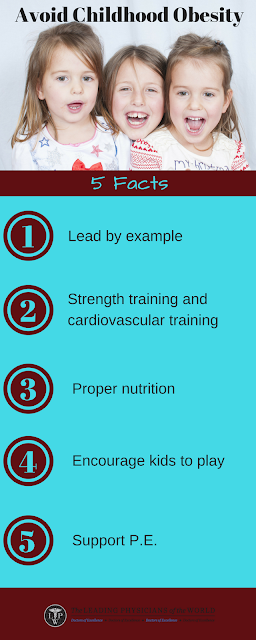Reduce Childhood Obesity
The
percentage of children and teens who are overweight has doubled in the past 30
years. A total of 17 percent of American children ages 2 to 19 are overweight
or at risk of becoming overweight. Like adults, overweight children and
adolescents are at risk for a variety of health consequences, including type 2
diabetes, high blood pressure, cardiovascular disease, and asthma. Those facts
are changing the way that researchers are approaching obesity itself, as well
as its causes and treatment.
Obesity is
a complex problem with many drivers, including our behaviour, environment,
genetics and culture. However, at its root obesity is caused by an energy
imbalance: taking in more energy through food than we use through activity.
Physical activity is associated with numerous health benefits for children,
such as muscle and bone strength, health and fitness, improved quality of sleep
and maintenance of a healthy weight. There is also evidence that physical
activity and participating in organized sports and after school clubs is linked
to improved academic performance. Long-term, sustainable change will only be
achieved through the active engagement of schools, communities, families and
individuals.
Here is what parents can do.
1. Remove
calorie-rich temptations
Treats are
OK in moderation, but limiting high-fat and high-sugar or salty snacks can also
help children develop healthy eating habits. Here are examples of
easy-to-prepare, low-fat and low-sugar treats that are 100 calories or less:
●A medium-size apple
●A medium-size banana
●1 cup blueberries
●1 cup grapes
●1 cup carrots, broccoli, or bell
peppers with 2 tbsp. hummus
2. Encourage healthy eating habits
●Small changes can lead to a recipe
for success
●Provide plenty of vegetables,
fruits and whole-grain products.
●Choose lean meats, poultry, fish,
lentils and beans for protein.
●Serve reasonably sized
portions.
●Limit sugar-sweetened beverages,
sugar, sodium and saturated fat.
Help your
kids understand the benefits of being physically active. Teach them that
physical activity has great health benefits like:
●Strengthening bone
●Decreasing blood pressure
●Increasing self-esteem
●Helping with weight management
2.
Taking out
20% of sugar in products
Evidence
shows that slowly changing the balance of ingredients in everyday products, or
making changes to product size, is a successful way of improving
diets. This is because the changes are universal and do not rely on
individual behavior change. All sectors of the food and drinks industry will be
challenged to reduce overall sugar across a range of products that contribute
to children’s sugar intakes by at least 20% by 2020, including a 5% reduction
in year one. This can be achieved through reduction of sugar levels in
products, reducing portion size or shifting purchasing towards lower sugar
alternatives.
3.
Help kids
stay active
Children
and teens should participate in at least 60 minutes of moderate-intensity
physical activity most days of the week, and every day if possible. Start
adding physical activity to your own daily routine and encourage your child to
join you. Some examples of moderate-intensity physical activity include:
●Brisk walking
●Playing tag
●Jumping rope
●Playing soccer
●Swimming
●Dancing
If we want
to turn the obesity trend aroundwe'll need to address
some of these more issues involving our way of life, our policies, our society.
And to accomplish that, we'll need to address these issues as a society, on all
possible levels.




Comments
Post a Comment